Caral, Peru
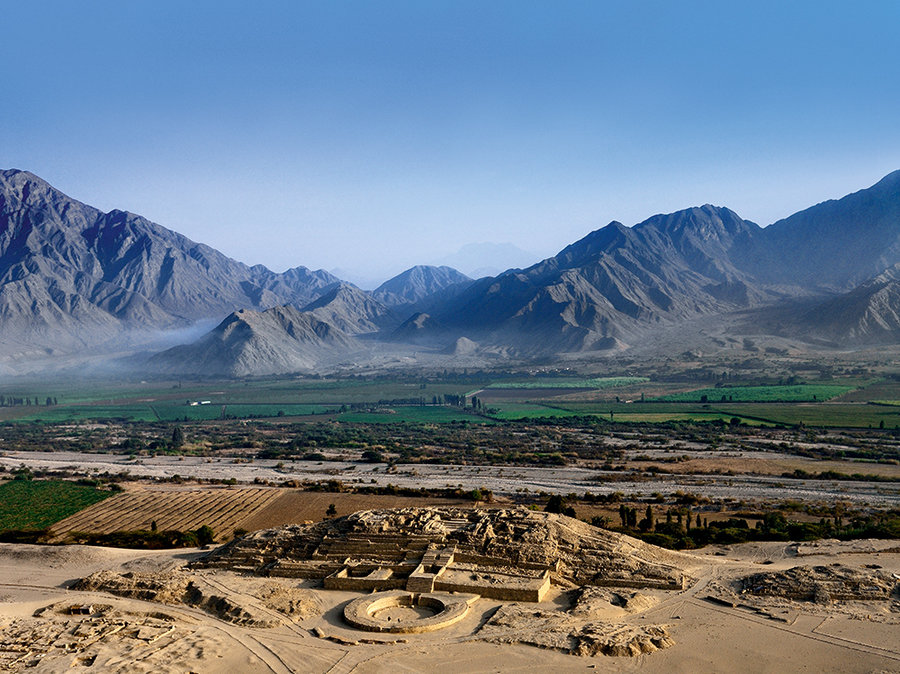
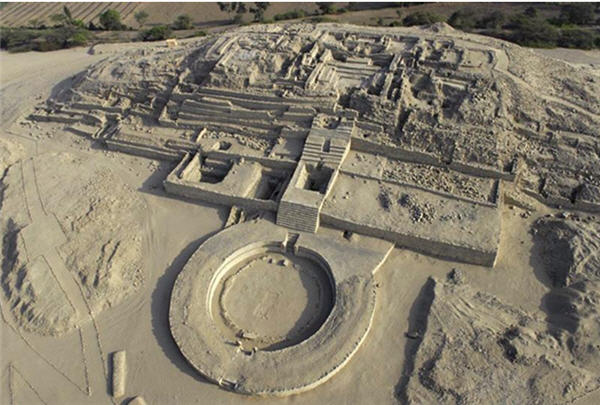
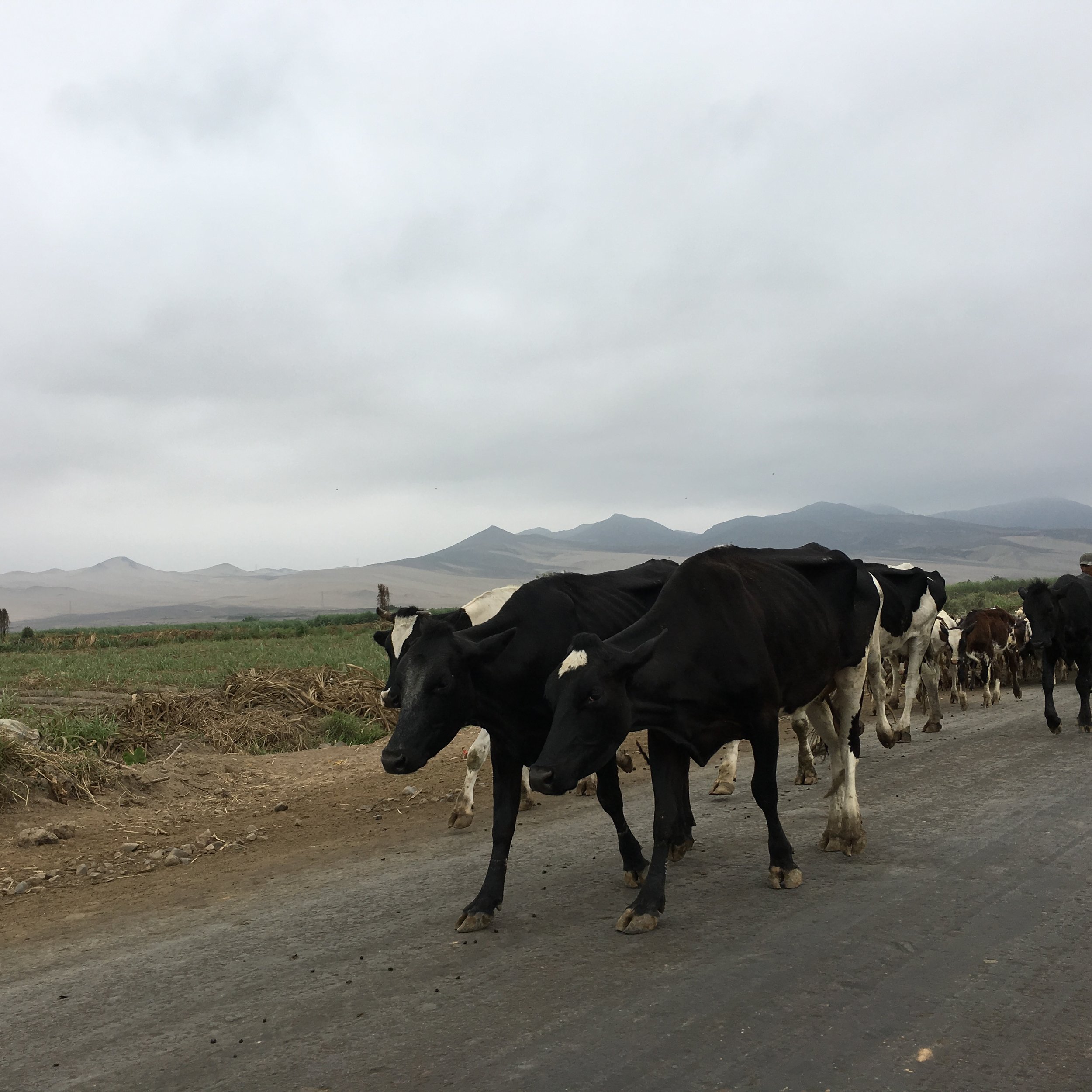


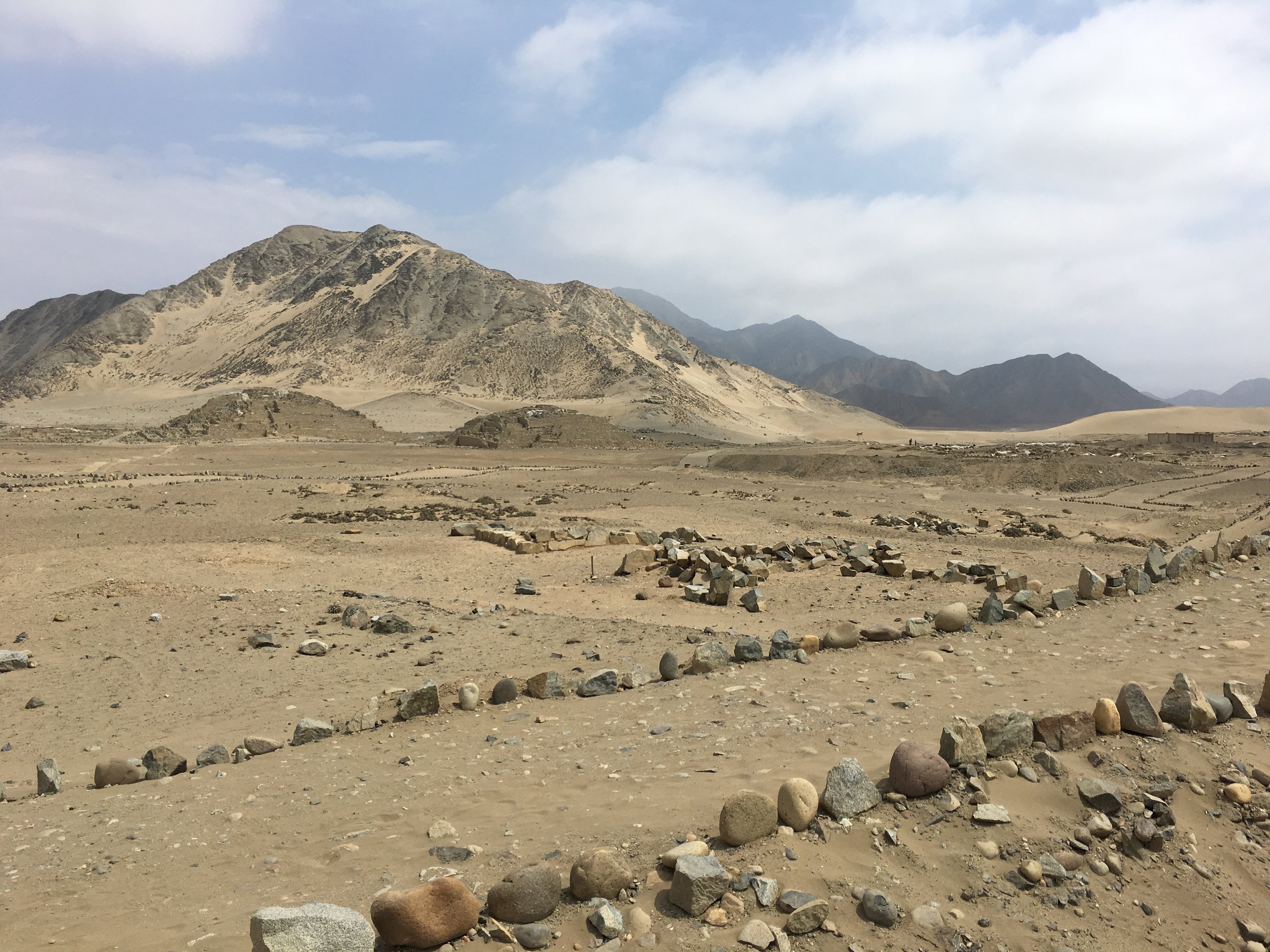
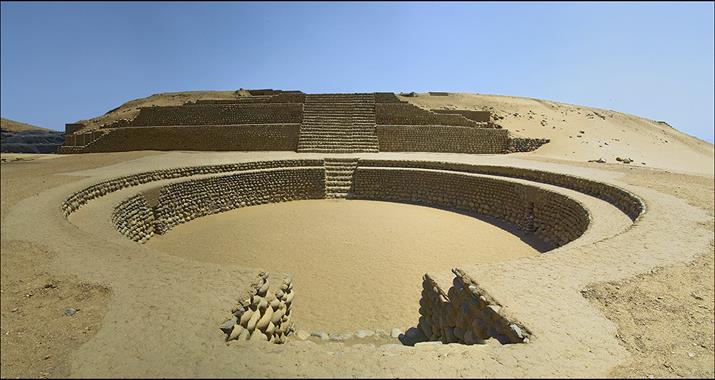
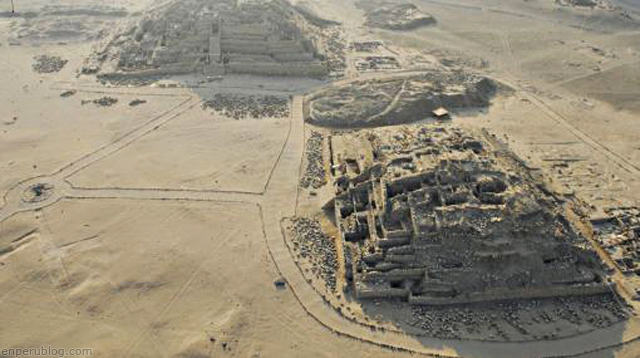
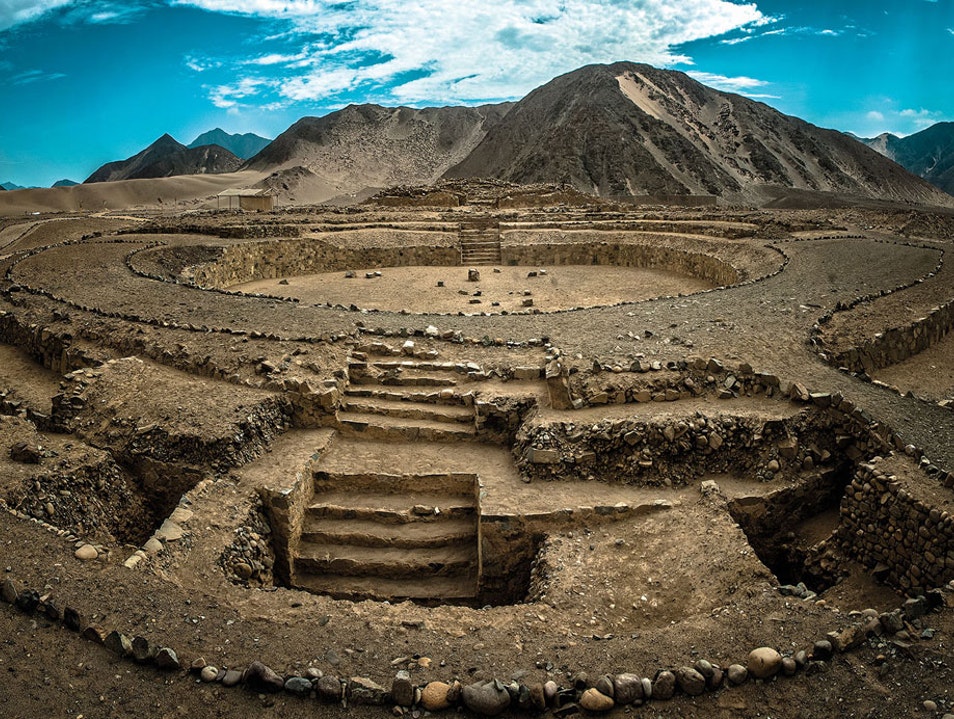
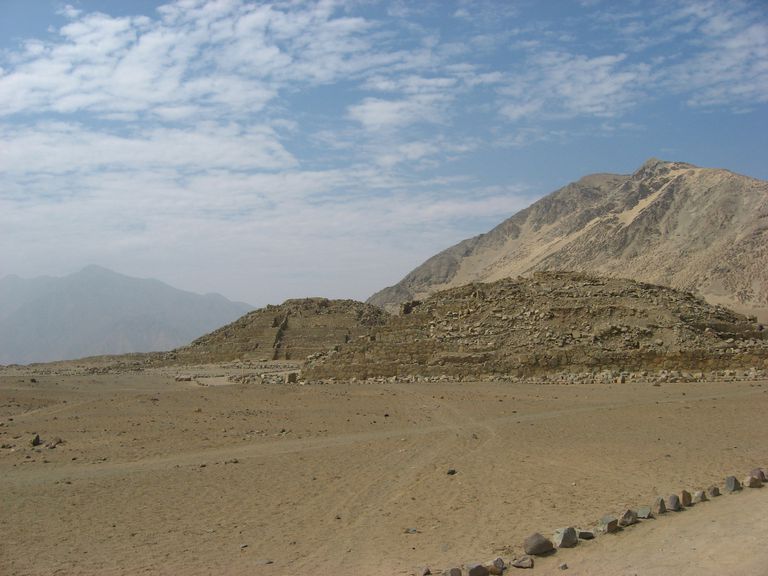
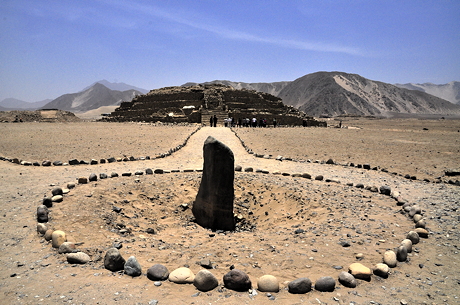
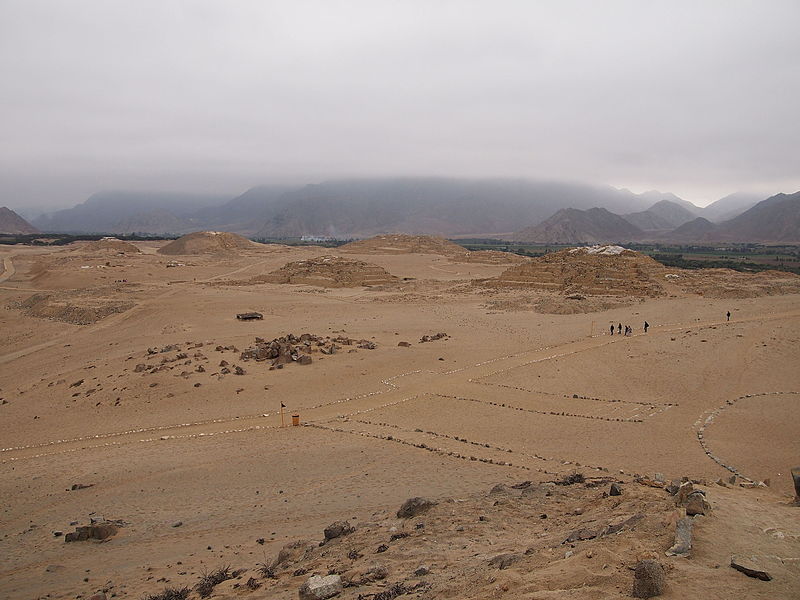
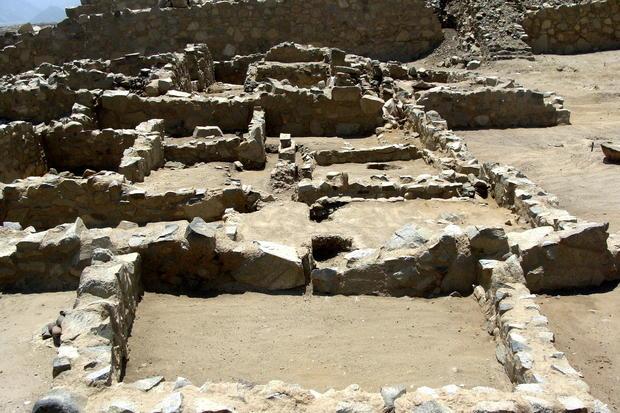
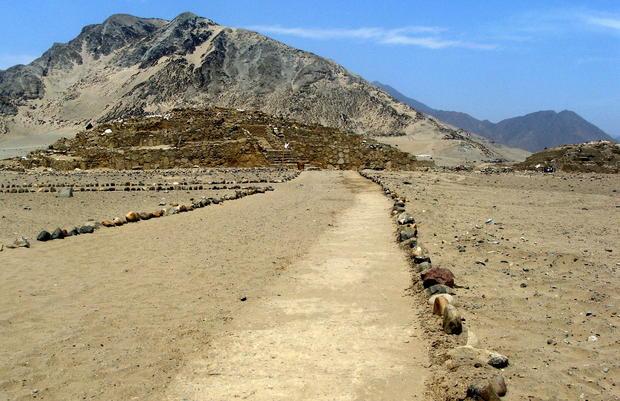
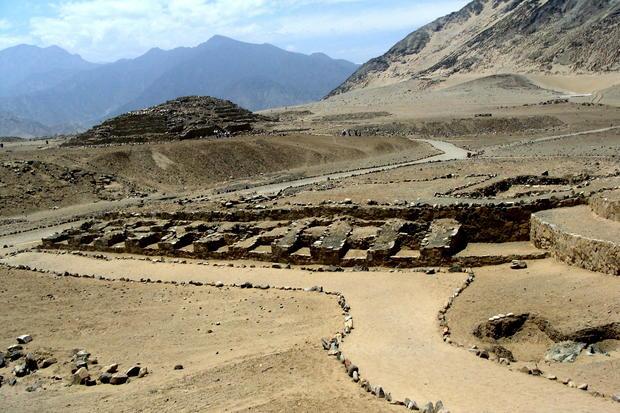
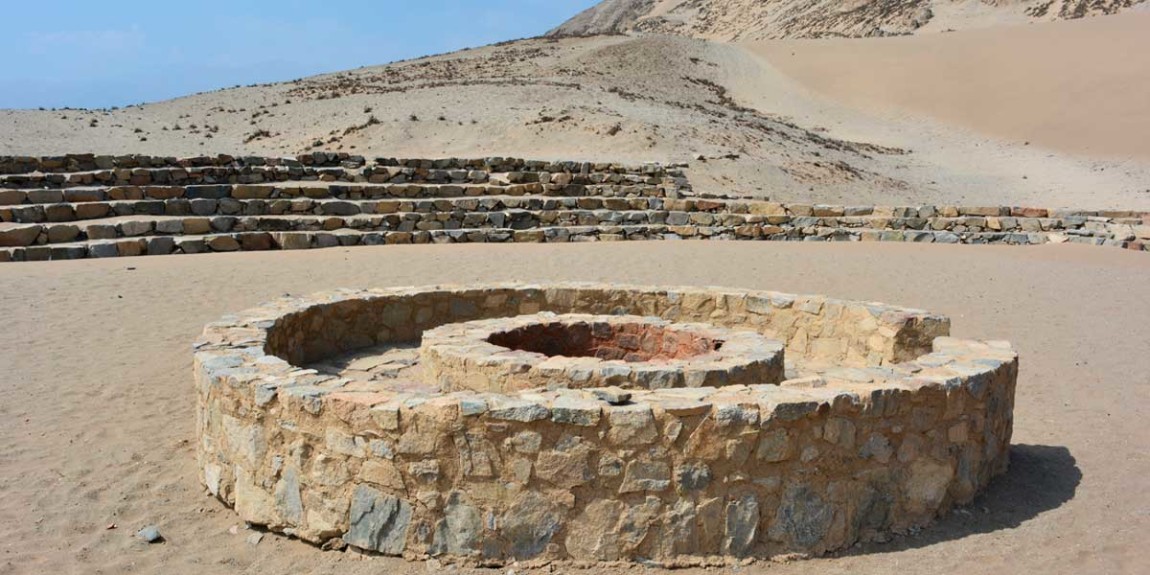

The Caral site is the remnants of society that arose in four valleys in northwestern Peru about 6,000 years ago. The Norte Chico / Caral Supe people built settlements and monumental architecture in the valleys arising from the arid Pacific coast. The Caral site is situated beside the Rio Supe and overlooks the lush valley that has provided food to the local people for thousands of years.
Caral is one of the largest ceremonial centres, and is located some 23 km inland from the mouth of the Supe river as it flows into the Pacific. The site covers ~110 ha and contains six large platform mounds, three sunken circular plazas, and numerous smaller mounds. The largest mound is called Pyramid Mayor, its base covers and area of 1.5 hectares and is 18 m high.
All of the mounds were built within one or two building periods, which suggests a high level of planning. The public architecture has stairs, rooms, and courtyards; and the sunken plazas suggest society-wide religion. The site is an active archaeological dig and so is always changing.
Situated on the edge of the dry foothills of the western Andes, the climate in Caral can be very hot and dry.
Getting there
There are a couple of options for travelling to Caral, hire a car and drive yourself or join one of the tours departing from Lima.
Join the Expresa Paseo de la República and head north, for 6 kilometers. Take Avenida Alfonso Ugarte to Puente del Ejercitoin Rímac and turn left at Av. Miguel Grau and continue along Paseo Colon for about 600 meters.
At the roundabout, take the 2nd exit onto Avenida Alfonso Ugarte, and stay on Avenida Alfonso Ugarte for about 1.4 kilometers. Join G Auxiliar Panamericana Nte./Carretera Panamericana Norte in San Martín de Porres. Follow Auxiliar Panamericana Nte./Carretera Panamericana Norte to Carr. Caral-Las Minas-Ambar in Gobierno Regional de Lima about 175 kilometers.
Turn right onto Carr. Caral-Las Minas-Ambar for about 16 kilometers on the left you should see the Capilla Llamahuaca, about 2.1 kilometers turn right onto Accesso Caral and follow this dirt raod for about 3.3 kilometers, Caral will be on your right.


